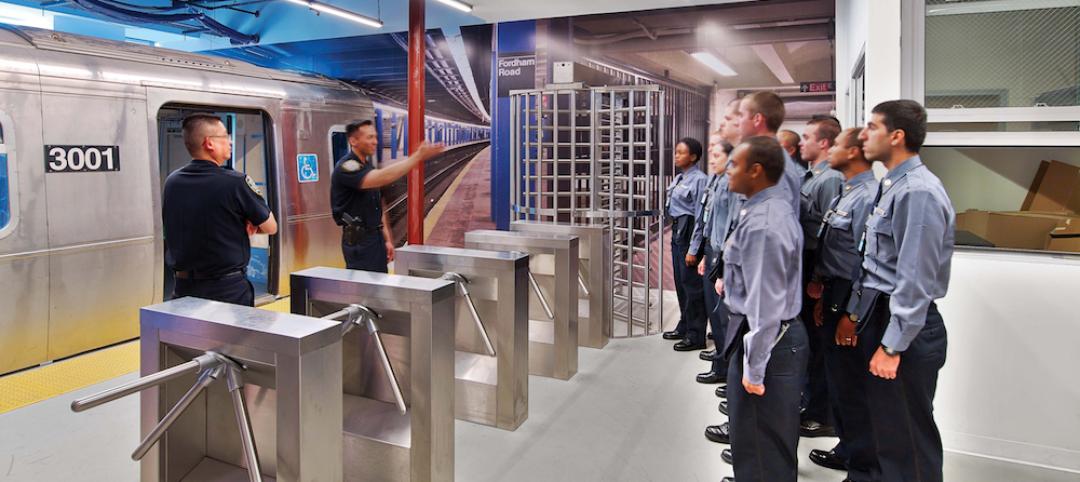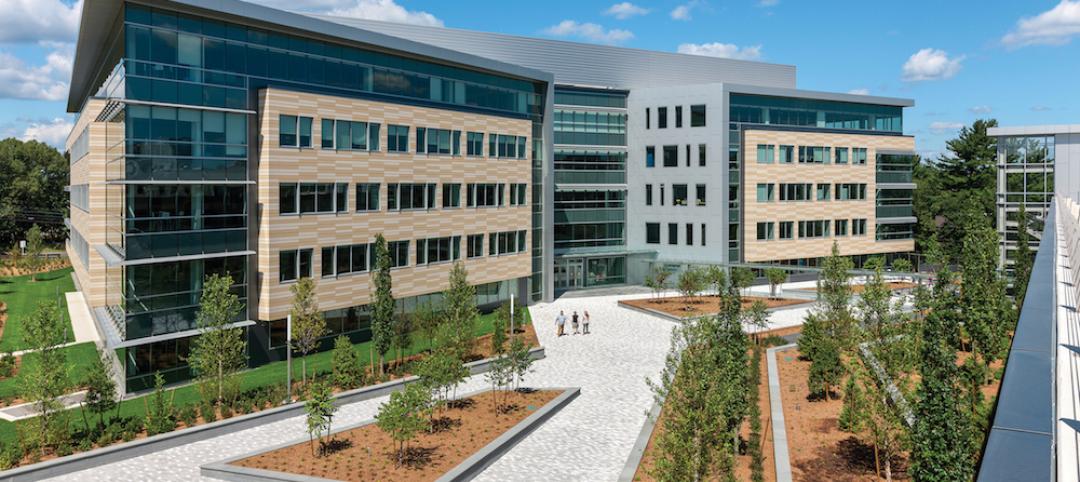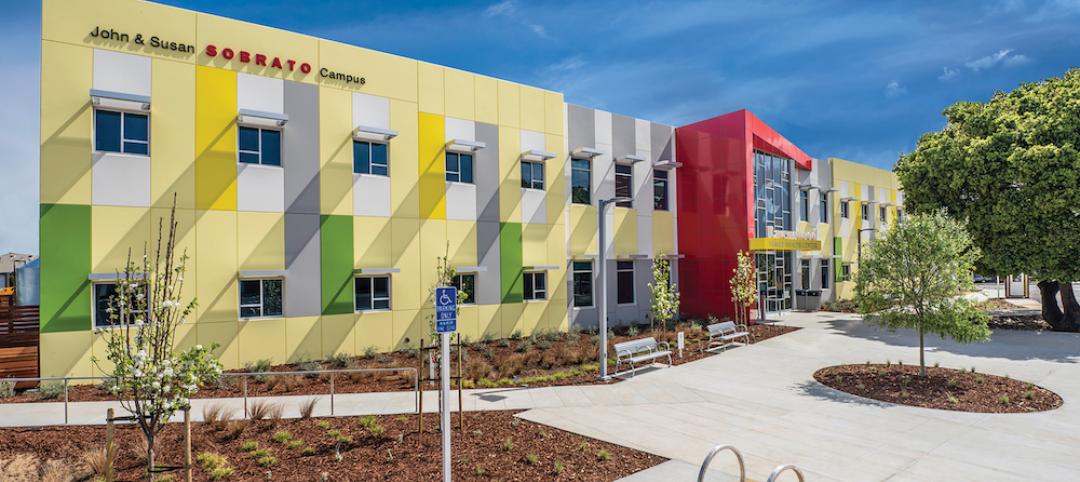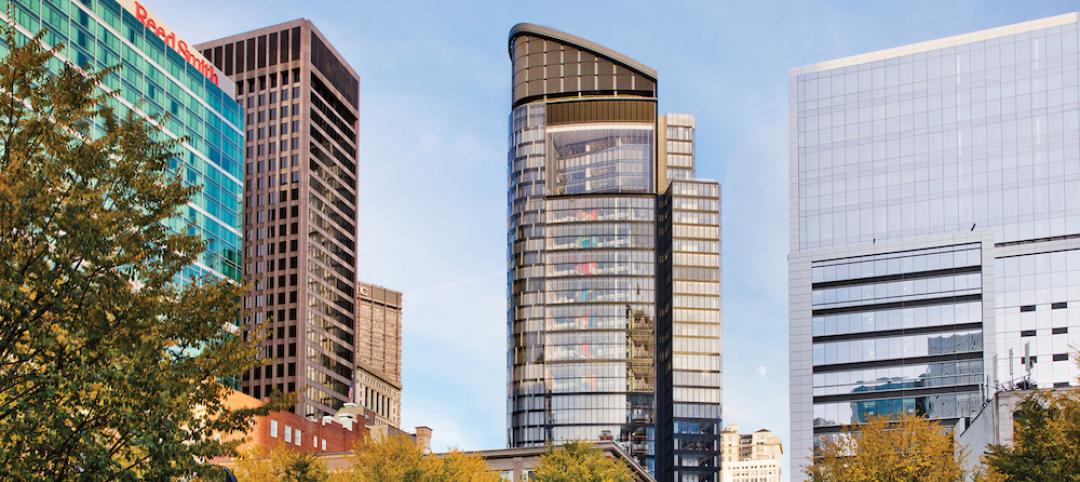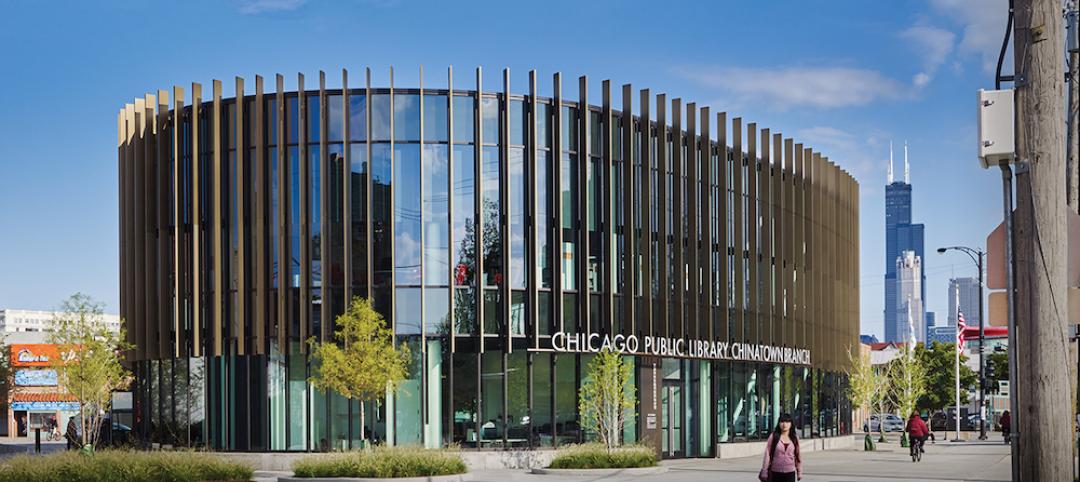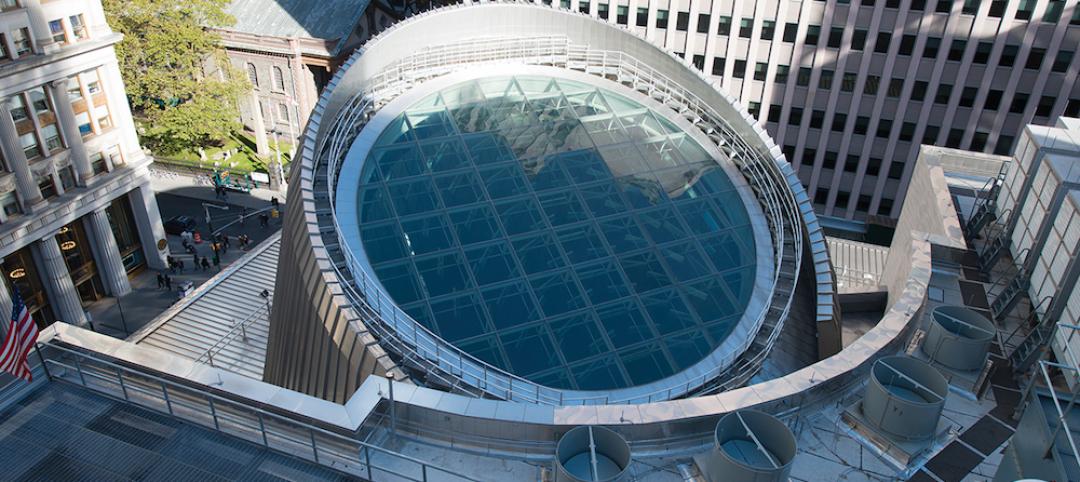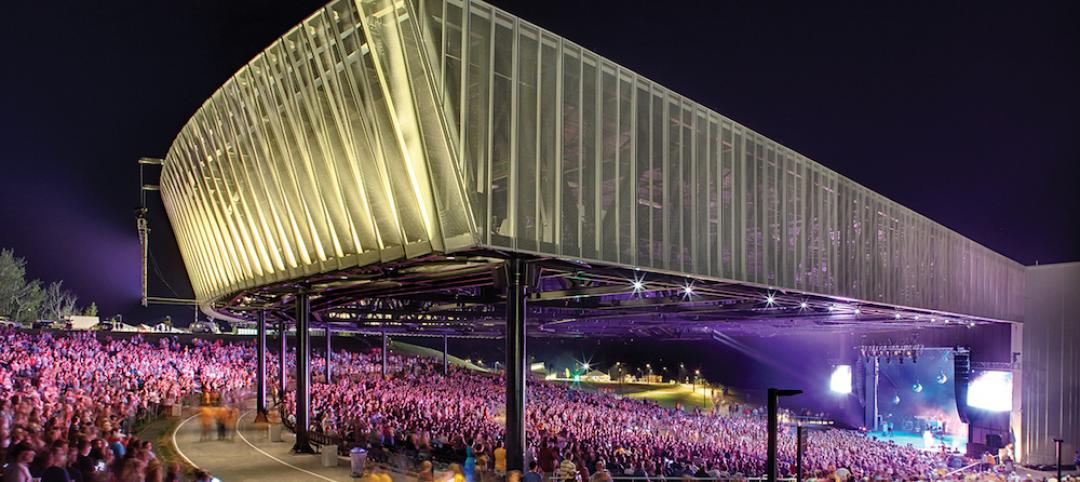Daily life as a researcher in the typical high-containment lab facility goes something like this: Arrive early in the morning at a nondescript building. Pass through security. Complete extensive containment procedures—shower-in, change clothes, etc. Finally, enter a dreary, largely windowless inner sanctum for eight to 10 hours of intense lab work. Any break from research activity—to grab lunch, attend a meeting, work on the computer—requires a trip out of containment, along with exit and re-entry procedures. On a busy day, researchers could repeat this cycle half a dozen times.
The Building Team for the Pirbright Institute’s new Category 4 biocontainment facility (roughly equivalent to BSL-3 Enhanced in the U.S.) thought there had to be a better way. With the goal of attracting and retaining the world’s top viral disease scientists to Pirbright’s campus in Surrey, England, the team, led by design architect and lab planner HDR, project/program manager AECOM, and design-builder Shepherd Group, set out to rewrite the rules of containment lab design. What the group ultimately delivered is unlike anything seen in an infectious diseases laboratory environment.
The 151,000-sf Plowright Building breaks free from the traditional box-inside-a-box containment lab approach by literally turning the building inside out. The lab spaces that normally would be located within the inner sanctum are located at the perimeter of the structure, where floor-to-ceiling windows flood the research spaces with natural light. At the center of the building are work and collaboration zones—offices, conference rooms, and a cafeteria—situated around a dramatic cylindrical, three-story, skylit glass atrium.
PROJECT SUMMARY
PLATINUM AWARDBBSRC National Virology Centre – The Plowright Building
The Pirbright Institute
Surrey, EnglandBUILDING TEAM
Submitting firm: HDR (architect, lab planner)
Owner: Pirbright Institute, Biotechnology and Biological Sciences Research Council
Project/program manager: AECOM
Structural, MEP engineer: AECOM Engineering
Cost consultant: Turner and Townsend
Commissioning consultant: Merrick & Co.
Design-builder: Shepherd GroupGENERAL INFORMATION
Size: 151,000 sf
Construction cost: $175 million U.S.
Construction time: July 2011 to October 2014
Delivery method: Design-build lump-sum price
To minimize the number of times researchers must transfer in and out of containment during a typical workday, the team located most of the building’s work and meeting spaces within the containment zones, including a portion of the main cafeteria. There, a 15-foot-high glass wall separates the containment dining area from the general eating area—a design feature that, for the first time, allows Pirbright to conduct all-staff meetings and symposiums without researchers having to leave containment.
To pull off this audacious scheme, the team worked hand in hand with the client to develop creative solutions to countless formidable problems. They include:
• Maintaining an airtight seal at the perimeter. Solution: a custom concrete containment barrier, meticulously sanded and coated with a seven-layer custom-designed containment system. Steel frames for the building’s 2,182 through-wall penetrations (windows, doors, services, etc.) were cast into the concrete walls to accept gaskets that are vital to maintaining an airtight seal at each penetration point.
• Applying a layered approach to containment that mirrors risk level. Solution: A negative air-pressure cascade moves from the lowest containment zones (RS0) to the most stringent zones (RS4) with once-through air that is exhausted through a HEPA air-filtration system in a penthouse floor above the labs. Sample and waste flow is one-directional. Samples come in at one end of a lab wing and waste goes out—through autoclaves—at the opposite end.
The close-knit Building Team implemented numerous teaming and quality best practices—including factory acceptance testing, mockup testing, team scoring, 360-degree feedback, and clean builder procedures—to ensure the project went off without a hitch. The results are proof of the team’s success. The building opened last October, a week earlier than scheduled and under budget. More to the point, the facility is meeting Pirbright’s stated goal of attracting top talent. Since opening, the institute has more than doubled its research staff, to 350.
“This project showcases a truly innovative design approach to a containment facility,” said Building Team Awards judge Nathaniel Snydacker, PE, LEED AP, Vice President with Environmental Systems Design. “The collaboration between design team, owner, and construction team was readily apparent in the unique vision for this facility, allowing color and sunlight into what would typically be a cavern.”
For more about the Plowright Building: www.BDCnetwork.com/Pirbright.
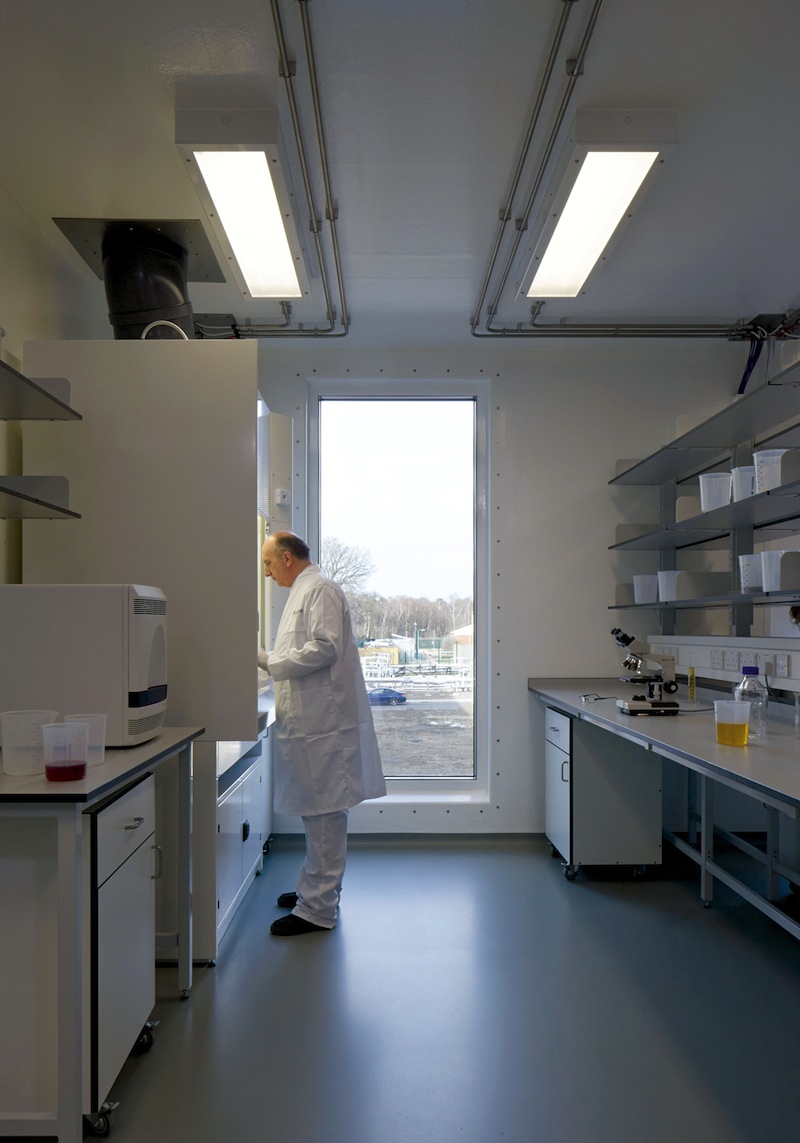 Floor-to-ceiling windows flood the labs with natural light and offer scenic views of the Pirbright Institute campus. To maintain an airtight seal at the through-wall penetrations (windows, doors, service ducts, etc.), the team developed a custom gasket system that can be easily serviced for the life of the building. Photo: © James Brittain
Floor-to-ceiling windows flood the labs with natural light and offer scenic views of the Pirbright Institute campus. To maintain an airtight seal at the through-wall penetrations (windows, doors, service ducts, etc.), the team developed a custom gasket system that can be easily serviced for the life of the building. Photo: © James Brittain
 The main collaboration spaces at Plowright—meeting rooms, workstations, and cafeteria—overlook a dramatic, three-story, glass-enfolded atrium at the heart of the facility. The building’s transparent curtain wall, skylit atrium, and abundant interior glass flood the indoor spaces with natural light and provide visual connectivity to the work being conducted inside the building. Photo: © James Brittain
The main collaboration spaces at Plowright—meeting rooms, workstations, and cafeteria—overlook a dramatic, three-story, glass-enfolded atrium at the heart of the facility. The building’s transparent curtain wall, skylit atrium, and abundant interior glass flood the indoor spaces with natural light and provide visual connectivity to the work being conducted inside the building. Photo: © James Brittain
Related Stories
Building Team Awards | May 31, 2016
Gonzaga's new student center is a bustling social hub
Retail mall features, comfortable furniture, and floor-to-ceiling glass add vibrancy to the new John J. Hemmingson Center.
Building Team Awards | May 27, 2016
Big police academy trains thousands of New York's finest
The Police Training Academy in Queens, N.Y., consists of a 480,000-sf academic/administration building and a 240,000-sf physical training facility, linked by an aerial pedestrian bridge.
Building Team Awards | May 26, 2016
Cimpress office complex built during historically brutal Massachusetts winter
Lean construction techniques were used to build 275 Wyman Street during a winter that brought more than 100 inches of snow to suburban Boston.
Building Team Awards | May 25, 2016
New health center campus provides affordable care for thousands of Northern Californians
The 38,000-sf, two-level John & Susan Sobrato Campus in Palo Alto is expected to serve 25,000 patients a year by the end of the decade.
Building Team Awards | May 24, 2016
Los Angeles bus depot squeezes the most from a tight site
The Building Team for the MTA Division 13 Bus Operations and Maintenance Facility fit 12 acres’ worth of programming in a multi-level structure on a 4.8-acre site.
Building Team Awards | May 23, 2016
'Greenest ballpark' proves a winner for St. Paul Saints
Solar arrays, a public art courtyard, and a picnic-friendly “park within a park" make the 7,210-seat CHS Field the first ballpark to meet Minnesota sustainable building standards.
Building Team Awards | May 20, 2016
Pittsburgh's Tower at PNC Plaza raises the bar on high-rise greenness
The Building Team designed the 800,000-sf tower to use 50% less energy than a comparable building. A 1,200-sf mockup allowed the team to test for efficiency, functionality, and potential impact on the building’s occupants.
Building Team Awards | May 19, 2016
Chinatown library unites and serves two emerging Chicago neighborhoods
The 16,000-sf, pebble-shaped Chinatown Branch Library was built at the intersection of new and old Chinatown neighborhoods. The goal is for the building to unite the communities and serve as a catalyst for the developing area.
Building Team Awards | May 19, 2016
NYC subway station lights the way for 300,000 riders a day
Fulton Center, which handles 85% of the riders coming to Lower Manhattan, is like no other station in the city’s vast underground transit web—and that’s a good thing.
Building Team Awards | May 16, 2016
Upstate New York performing arts center revives once-toxic lakefront site
Early coordination, prefabrication, and judicious value engineering contributed to the accelerated completion of the Onondaga Lakeview Ampitheater, a Upstate New York design-build project.




